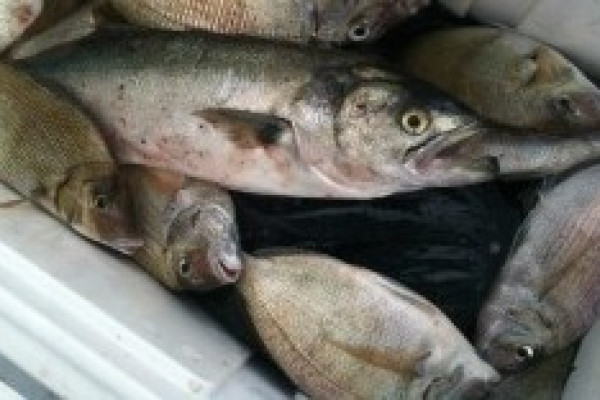
Fisheries have evolved since the 1980s, but scup is still caught in traps.
By Seth Rolbein
The romantic view of Cape Cod has always involved fishing and the waterfront. The hard economic view, however, often pits commercial fishing against other interests. Waterfront development, recreational fishing, tourist boating, indeed the general trend toward a suburban peninsula, all move against the grain of the small rural world which relies on the water and the fishermen who farm the water.
Is the “fishing industry” a thing of the past? How much does commercial fishing really add to the Cape’s present economy?
***
These are not thoughts and questions raised at a recent conference or “Blue Economy” roundtable. Believe it or not, they appeared exactly 40 years ago, June, 1982, introducing an article called “Cape Cod’s fishing industry dissected – the fish story.”
The article appeared in a publication called “The Cape Cod Business Journal.” The introduction was written by the journal’s editor — OK, that was a much younger me. It presaged careful work by Arnold Carr and Beth Amaral, two stalwarts at the Massachusetts Division of Marine Fisheries, who spent many hours pouring over reports to dredge great, granular specifics to light, in as close to 1982 real time as they could get.
“Their conclusions,” I wrote then, “detail for the first time in our memory the overall impact of fishing on Cape Cod, with some sophisticated analysis of the side shoots and tangential assets which fishing dollars produce.”
Arne and Beth created a strong narrative with an accompanying chart. Rather than trying to reproduce the whole thing, which covered the bulk of two pages of old-fashioned newsprint, it seemed better to cull out some of their findings, economic snapshots of what Cape Cod’s commercial fishing industry looked like 40 years ago. Here are some revealing snaps, noting that then as now, some of these numbers dated back a few years as reporting was catching up:
The Cape Cod fishing industry dissected, 1982
Number of commercial fishing boats over 32 feet long: 221
Of those, fishing for cod, haddock, flounders: 192
Fishing for sea clams or sea scallops: 20
Additional inshore lobster boats: 71
Fish trap or weir boats: 8
Number of the groundfish fleet with mobile gear (draggers): 85
Fixed gear (gillnets, jigs, longlines): 105
Number of skiffs (small boats) in the fishery, year-round: 125
Total number of pounds of finfish and shellfish landed: 63.9 million
Total value to the boats: $35.1 million
Total value, top three ports:
Provincetown: $10.3 million
Sandwich: $9.8 million
Chatham: $3.8 million
Annual expenses, draggers (by boat, range): $33,000-$98,000
Operations (fuel, food, supplies): $15,000- $42,000
Maintenance (boatyard, electronics): $8000- $16,000
Fixed (insurance, banks, fees): $10,000-$40,000
Annual expenses, skiffs (by boat, range): $2900-$10,500
Operations (fuel, food, supplies): $1500-$4000
Maintenance (boatyard, electronics): $1000-$4000
Fixed (insurance, banks, fees): $400-$2500
Annual dragger fleet payments to other businesses, almost all on Cape: $4.7 million
Annual payments by other commercial boats (gillnets, jigs, etc): $3.6 million
Number of people who make all or most of their income from commercial fishing: At least 900
****
There are some fascinating comparisons and changes that jump out from these numbers:
The dominance of traditional groundfish, meaning cod especially, is gone. A rundown of today’s landings would need to focus on species like dogfish, skate, and monk.
So too is the dominance of small-boat draggers and mobile gear, particularly for Provincetown, where a large fleet of trawlers has been reduced to a handful. For weir or trap fishing, what was eight boats is now two.
Meanwhile, no doubt that both lobsters and sea scallops, particularly as defined by value rather than pounds, are now playing a much bigger role in the big picture.
So too is shellfish, particularly as aquaculture.
Of course all expenses and payments shown here are in 1982 dollars, which only magnifies their importance at that time. But it’s a good bet that a similar analysis today, even though many support services for commercial fishing now reside over the bridges in and around New Bedford, would show comparable economic impact.
Now, as then, those spin-off benefits are underappreciated.
Now, as then, when people wonder whether the fishing industry is a thing of the past, the answer clearly is no.
